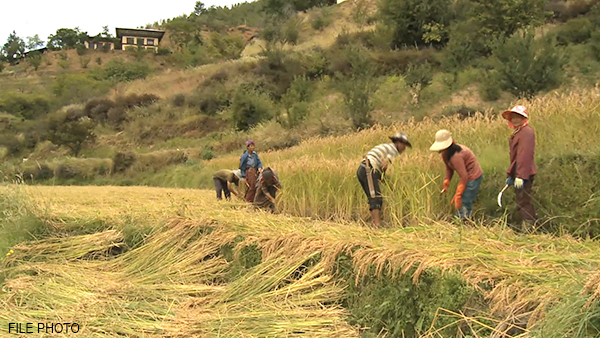 With only 2.9 per cent land cultivated of the total 7.8 per cent arable land in the country even today, the growth in the country’s agriculture sector has been sluggish.
With only 2.9 per cent land cultivated of the total 7.8 per cent arable land in the country even today, the growth in the country’s agriculture sector has been sluggish.
Officials from the agriculture ministry said this at the ongoing SAARC regional expert consultation meeting on Water-Energy-Food Nexus in the capital.
Decreasing public investment, limited skills to adopt modern agriculture technologies and human-wildlife conflicts were cited as some of the factors to be blamed for the sluggish growth.
Other major challenges include losing farmland to urbanisation. “Every day, every month we are losing land to urbanization, infrastructure development and many other development programmes,” said Kinlay Tshering, the Director of the Department of Agriculture.
Rural-urban migration is another factor contributing to the slow growth of the country’s agriculture sector. “It is creating labour shortages in the farms,” said Kinlay Tshering. “Also, we have been observing farm feminization, which literally means we are seeing more female farmers than men farmers.”
Slow growth in the sector, officials say, resulted in heavy imports of farm products and inputs. From 2008 to 2014, the value of agricultural deficit increased by 17 per cent increase annually.
The trend also directly translates to ensuring food security in the country. The director said although Bhutan does not face chronic food insecurity, there are pockets of hunger particularly in eastern and southern parts.
She added shortage of irrigation water is a serious challenge to increasing food production. Of the total cultivated land, only about 18% is under irrigation.
“Without water, we can’t talk about commercializing, improving productivity or enhancing production,” said Director Kinlay Tshering. That’s why, she said the ministry has identified irrigation water as one of the key interventions both for the 11th ad 12th Five Year Plans.
For the development of the agriculture sector, the ministry also proposed targeted and commodity focused approach, transition from subsistence to commercial agriculture, enabling policy and legal framework, promotion of private sector, and contract farming.












